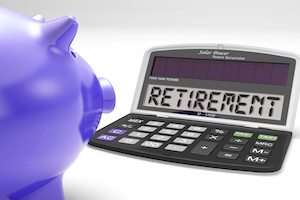
Smart Steps to Plan for Retirement
Many people worry that Social Security retirement benefits and Medicare won’t be available to them in the future. Recent reports from the Social Security and Medicare trustees indicate that if Congress doesn’t act to better fund these programs, they will face shortfalls in the coming years.
However, Social Security and Medicare are incredibly important programs that many people rely on heavily, so it’s hard to imagine that politicians won’t act to ensure their survival. Even so, while we hope Congress will do something, there are steps we can take on our own to plan ahead. To make sure you have enough savings to cover health care and other costs in retirement, here are some strategies you might want to consider:
Set up a separate health care fund
If possible, open and use a health savings account, a tax-advantaged medical savings account, to put away pretax dollars so you’ll be able to use them tax-free in retirement for qualified health care expenses. In order to have an HSA, you’ll have to have a high-deductible health insurance plan. Setting up an HSA when you’re younger and have fewer health issues could be the best way to save for future health care needs. If you are older and can’t get or can’t afford a high-deductible plan, you should try to save additional money (beyond maximum allowed contributions to your retirement accounts) that you can use for health care copays and deductibles in the future.
Downsize to boost savings
Consider moving into a smaller home or otherwise downsizing your housing and other expenses as much as possible. This will help you reduce your spending now and during retirement and can help you increase your retirement savings. Once you contribute the maximum allowed to all of your retirement accounts, you could put the additional savings into tax-efficient vehicles like after-tax funded tax-deferred annuities, where you delay paying taxes on gains until you take the money out.
Plan for your care
If you want to stay in your home as you age, make sure your home is adequately prepared and you have enough room to house a caregiver. You’ll also need to save enough to cover five years of such care. In my case, I’m planning on $120,000 for this category. If that sounds like too much, you may be able to fund some or all of this cost out of your retirement cash flow. For instance, $3,000 a month (in today’s dollars — more in the future if there is inflation) could cover the cost of hiring a caregiver. This money could come from your savings or possibly a reverse mortgage that allows you to use some of your home equity for this kind of need.
Another option is to buy long-term care insurance, most optimally in your mid-50s, to fund the cost of caregiving in your home or an institutional setting. But remember, such policies pay benefits only when you can’t do two or more basic life skills like feed and clothe yourself.
Finding support
Once you retire, you can continue being savvy and frugal. Consider bartering with or paying for services from friends, relatives or neighbors to help keep costs down. Volunteer programs like the Village to Village Network can also help seniors find affordable access to service providers.
The more you can save and plan now, the more flexibility you’ll have in retirement. Talk to your significant other, relatives, friends and neighbors. Ask them what they think about your plans or whether they may have any alternative strategies for you to consider. They can offer suggestions, support or more. It’s also smart to work with a financial advisor who can help ensure you’re on track with your retirement savings and have a plan in place to cover health care costs and other expenses when you retire.
Jim Ludwick, CFP®, is the founder of MainStreet Financial Planning Inc.



